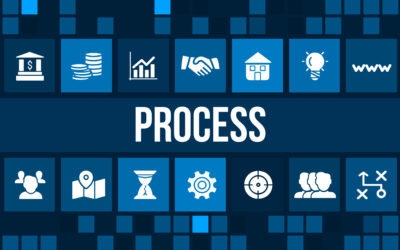
Does your organization have a data cleansing strategy? Each person generates massive amounts of data daily, whether through online purchases, streaming platforms, or just everyday browsing habits. Statista predicts that global data creation will reach more than 180 zettabytes by 2025.
This data is incredibly valuable to businesses as they use it for marketing purposes, customer segmentation, and user behavior analysis. So with new information constantly coming in, how can we ensure that the data is valid, up-to-date, and accurate?
The answer lies in data cleansing. Without this, you risk making decisions based on wrong or incomplete information. Let’s look at what this process entails and why it’s crucial to get it right.
What is Data Cleansing?
Data cleansing, also known as data scrubbing or data wrangling, refers to the process of identifying and removing inaccurate or redundant records from a database. It ensures that any reports generated by the system are accurate and up-to-date.
The process involves examining each record in the database for accuracy, consistency, completeness, validity, and conformity with other existing records. Any errors found will then be corrected or removed from the dataset. It can also involve integrating new datasets into existing ones if they have overlapping data points.
How Data Cleansing Works
Data cleansing requires a multi-step process to ensure the accuracy of the dataset. This is the backbone of your data cleansing strategy.
1. Identifying Data Issues
The first step is to identify any potential problems with the data. This can include checking for duplicates, missing values, or incorrect field entries. Suppose a customer’s address contains an invalid zip code, or their contact information is incomplete. In that case, this will need to be corrected before it can be used in reports or other analyses.
2. Cleaning the Data
Once the issues have been identified, the next step is to clean up the data. This involves correcting any errors or filling in missing values by either manually inputting them or using automated tools.
3. Verifying Cleanliness
The final step is verifying that all the records are now accurate and up-to-date. This can involve running tests on sample datasets, comparing results with existing ones, or using visualizations such as charts and graphs to ensure accuracy.
Why Businesses Need A Data Cleansing Strategy
Data cleansing may primarily be about keeping records updated, but its importance goes beyond that. Consider these benefits:
Improved Productivity
Imagine all the hours that would be wasted if employees had to constantly search for the correct data in a messy database. Some teams don’t even have the time to spare! A clean, up-to-date dataset will help employees make sense of their data quickly and make more informed decisions faster.
Improved Decision-making
Data can be a powerful tool when used correctly. But if you don’t have accurate information, your decisions will be based on erroneous information. Data cleansing ensures that all decision-makers are working with reliable data so that their choices are informed and sound.
Increased Savings
The consequences of incomplete or incorrect data can be costly. By cleaning data, you can avoid making mistakes in the long run that could otherwise lead to wasted resources and money. For example, inaccurate customer data can result in businesses sending out marketing materials to the wrong people and may even lead to a loss of customers!
Better Customer Service
Accurate customer data is essential to acquiring new customers and retaining existing ones. With data cleansing, businesses can keep customer profiles up-to-date, which in turn helps them to provide better customer service. This is especially important for industries such as travel or hospitality, where customers expect a higher level of personalization.
Best Practices for Data Cleansing Strategy
Data cleansing is a process that should be done regularly to ensure accuracy and efficiency. But more importantly, it should be done the right way. Here are some best practices to follow:
- Identify the data sources: Before beginning, identify all the data sources that need to be cleaned. These can include systems, databases, and spreadsheets.
- Customize your cleaning process: Develop a custom cleaning plan based on your specific needs and the type of data you’re dealing with. For instance, if you have customer records, you may want to focus on verifying contact information or eliminating duplicate entries to maintain an updated customer list.
- Automate where possible: Automation is critical to efficient data cleansing, as it allows you to quickly identify and fix errors without spending too much time on manual work.
- Monitor data quality over time: Even after the initial cleansing process is complete, make sure you monitor the quality of your data over time to maintain accuracy and detect any new errors that may have crept into your dataset.
Are There Any Data Cleansing Challenges?
Yes, there are. Data cleansing requires a systematic approach that can be time-consuming and costly. Businesses may have to manually go through millions of records to spot mistakes or inconsistencies. It is also challenging to integrate new datasets with existing ones if they do not share the same data structures.
Companies can use automated tools to help with the data cleansing process. These tools can quickly detect errors and inconsistencies and integrate new datasets into existing ones. However, some of these solutions are expensive and may require a certain level of expertise to operate correctly.
Fortunately, businesses can also outsource their data cleansing needs to third-party service providers. Some companies specialize in data processing and can efficiently clean up datasets so that you don’t have to worry about making mistakes or wasting time on mundane tasks.
Start Data Cleansing Today
Data cleansing is essential for any business that wants to remain competitive and make informed decisions based on reliable information. By ensuring accurate data through regular cleaning, companies can reduce costs, improve customer service, and increase efficiency across the board.
Our professionals at prosperspark.com can help you set up a data cleansing process or define a data cleansing strategy that best fits your business needs. With our tools and services, you will be able to quickly identify and correct errors in your database and keep the data accurate and up-to-date. Contact us today to learn more about our data cleansing services.







